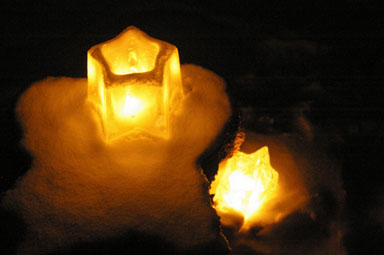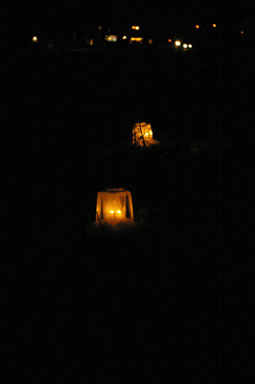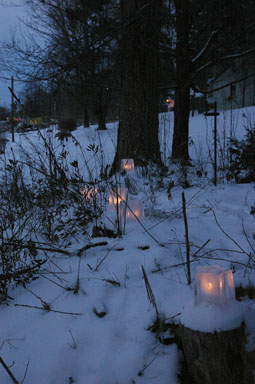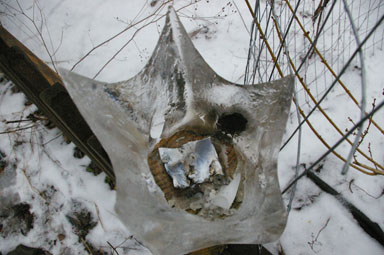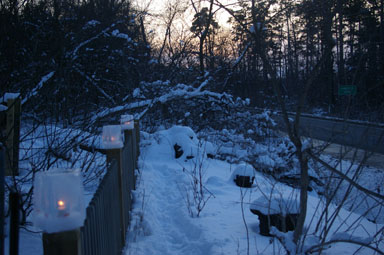February 16, 2013
Ice lanterns return
I enjoyed making ice lanterns last year, and thought I'd repeat the experiment this year once it got cold enough. We had a run of cold weather in January and a brief period where it could work in Febuary.
The main trick to doing this is weather. You need it cold enough to freeze lanterns, and single-digit (F) overnight temperatures are perfect. Once made, they can tolerate weather a little bit above freezing, but will disappear rapidly in warm rain. Wind gusts above about ten miles an hour put out even fresh lanterns, and partly-melted ones offer less protection. If it's too warm, the candle's heat can help melt the lantern and quickly create a puddle that puts out the lantern. Drainage holes help, but can freeze back up.
I tried to light them a little before sunset, as they're pretty in twilight, even if less dramatic than in the dark.
Ice lanterns seem about the safest way to burn candles, but when the candles got stuck in ice, I put new candles on top. That led to at least one small fire. It didn't go anywhere, but it scorched the silicone I put under the candles - so it's a warning of what can happen if wax catches fire beyond the wick.
The lanterns are temporary, and their time seems to be over for now. It's possible I'll make another set this year, but it will likely be December or January before it makes sense again.
The complete gallery of 2013 ice lantern photos has a lot more. As you can see, there are lots of different ways to take pictures of ice lanterns!
Posted by simon at February 16, 2013 10:27 AM inNote on photos
